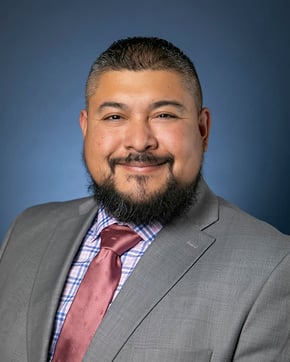There has been much discussion around student loans recently—both positive and negative—but they are still an important part of making higher education an attainable reality.
Many families rely on student loans to cover the ever-increasing cost of attending higher education. Inflation has hit all parts of the economy, and higher education tuition easily outpaces normal inflation rates. Consider that the average cost of college has doubled since 2000, with the average annual cost to attend college in California standing at around $8,500 for tuition and a whopping $39,000 a year when you add in housing and other associated costs. Students graduate from higher education with an average $37,850 in debt, and when they make their payments, they pay on average $2,000 a year in interest alone. These expenses can be a hardship and make attending colleges or universities simply unaffordable to many families.
While this may seem daunting, there are a variety of ways families can mitigate higher education costs and keep student loan requirements low. First and foremost, everyone entering college should fill out the Free Application for Federal Student Aid (FAFSA), regardless of income. This important application can open doors to financial aid opportunities from colleges and universities.
Students should also look for scholarships to help defray college costs. Scholarships are offered by universities and colleges, as well as from a variety of organizations. Ascent is one such organization that helps connect college students and their families to financial aid options, including scholarships. You can find easy, no-essay scholarship opportunities available at the Ascent website.
Another important way to pay for college is through grants such as Pell grants, Cal Grants here in California, and TEACH grants. Grants are usually based on financial need, and you don’t have to pay them back.
Families may also be able to use special college savings funds to help pay for college expenses. SAFE offers Coverdell Education Savings Accounts (CESA) specifically designed to encourage saving for higher education.
If after financial aid, grants, scholarships, and family contributions are taken into account and you still face a gap, then consider applying for student loans. SAFE partners with Ascent to provide a variety of loans, including those for medical and dental school students, parent loans, and law school loans.
You can also check out the Department of Financial Protection & Innovation’s (DFPI) Student Loan Empowerment Network. This site matches you with a student loan counselor and provides resources to help you manage your Student Loan Repayment.
Don’t feel like you are alone if you need assistance paying college expenses. According to the Urban Institute, 70 percent of students who receive a bachelor's degree have education debt when they graduate. However, study after study funds that even though a college education can be expensive, it offers a path toward higher-paying careers. People with bachelor’s degrees on average earn 86 percent more than those with only a high school diploma.
For those seeking to build financial freedom, higher education can be a solid way to get there. If you’re
If you’d like to learn more about options for paying for higher education, SAFE’s Financial Wellness Team is ready to help. We are dedicated to this mission and offer many webinars, workshops, and other resources on this topic.
Learn More
Find engaging and informative webinars offered by the SAFE Credit Union Financial Education team.



